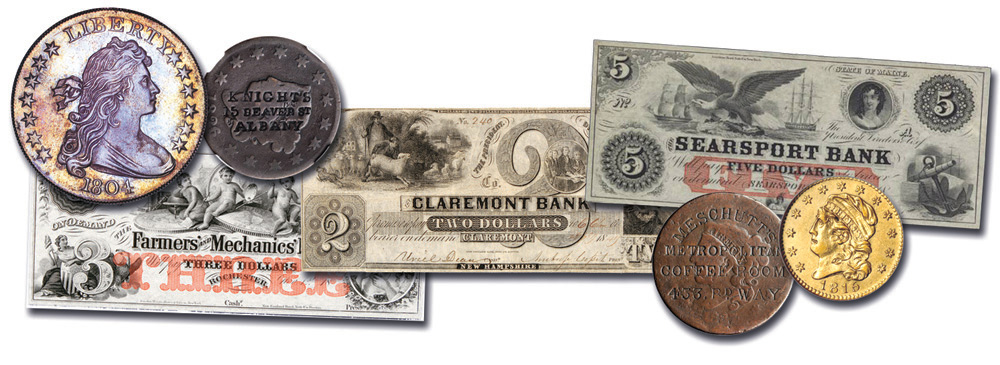
Answer: As an overview, my own collections, mostly of tokens and medals, plus obsolete paper notes of Maine and New Hampshire and National Bank notes of New Hampshire, is in the bank, but nicely photographed so I can enjoy it on my computer. I add to it from time to time when items are offered that seem interesting to me and are priced correctly. Regarding federal coins, I leave the excitement to my clients, although I deeply enjoy cataloging and handling them.
Over the years I have made any number of mistakes in the commercial arena — buying things that later turned out to be less than expected. These mainly occurred during my formative years in the 1950s. Recall that there were no certification services then, that altered dates and mintmarks and forgeries abounded, and there were no grading standards. To begin with early on I came up with the notion that if a dealer was famous and had done business for a long time, buying from him or her would be a safe thing to do. I quickly found that this could be an error. One of my earlier purchases involved two beautiful Proof half cents from the 1840s, which I purchased from one of the best known dealers for $200 each, then shipped them to a client Lester Merkin. Lester sent them back and advised me that these were very clever electrotypes. And, upon learning more about electrotypes I did see tiny traces of a seam along the edge of each. I returned them to the dealer but he refused to accept them, saying “You call yourself a dealer, you own them — no money back!” I am sorry to say that I had other similar experiences. However, I hasten to add that although I did business with Stack’s from teenage years onward, they were not among the “perps” as such people are called today. Now in 2013, coins certified by PCGS and NGC in particular are guaranteed for authenticity, although I am not familiar with the exact limits of such coverage. The bottom line is that one can be fairly secure regarding genuineness. As far as grade, that is a matter of opinion and is beyond this discussion.
Some years ago I thought it would be nice to own an 1815 half eagle, a rare early date and one for which I had a lot of historical information. I was able to buy a nice one, photographed it, and put it in the bank. Then I happened to ponder that I had tens of thousands of dollars invested in this coin, which I can enjoy by means of photographs, and even otherwise I am not sure I would have handled it frequently. My main interest was in the history of the coin, not necessarily its ownership. This prompts me to say that when we auctioned the Sultan of Muscat 1804 silver dollar as part of the Childs Collection — a superb Gem that puts in the shade each and every other 1804 dollar in existence — it was so exciting to me that I wrote a fairly lengthy book about this coin and 1804 dollars in general. I don’t own the coin — it is a proud possession of a fine client — but in another way I do own it as I have handled it, studied its history and it is part of my life.
Regarding my collection of tokens, medals, and paper money, I am not aware of any mistakes made in recent times, simply because I try to study in advance before making a bid or a purchase. If the item is trivial, such as a counterstamped coin for $100, not much study is required. If it is a rare New Hampshire National Bank note then I consult with my fine fellow specialist David Sundman, look up information, and determine what a reasonable price would be. Such notes tend to vary in cost all over the place and, without regard to New Hampshire notes in particular, I have seen that a certain National Bank note from a particular bank and town and in a certain grade can be priced at $1,000 by one seller and $2,000 by another. However, in recent times such services as Track & Price have information. This comment is significant and it also is relevant to tokens and other specialized series. If only three of a certain item are known, then one sold at auction for $2,000 and one is now offered for $4,000, if I say that I am not going to pay much more than $2,000 I may never own it. Instead, I have a choice of paying $4,000 or doing without. Because of this historic auction prices are interesting, but they are not necessarily a guide to what you should pay. On the other had, if I were collecting Morgan silver dollars and desired to buy, for example, the highly desired 1889-CC in MS-63 grade it would indeed be worthwhile to check auction prices as they would give a ballpark as to what I should pay and there would be no particular need to pay significantly more than recent averages. This is probably an overly complex reply to a rather simple question!





